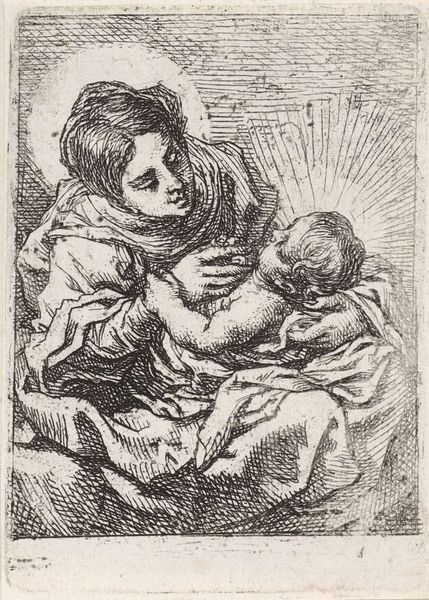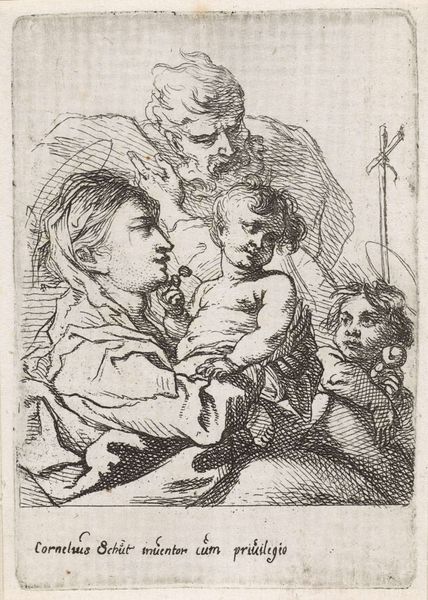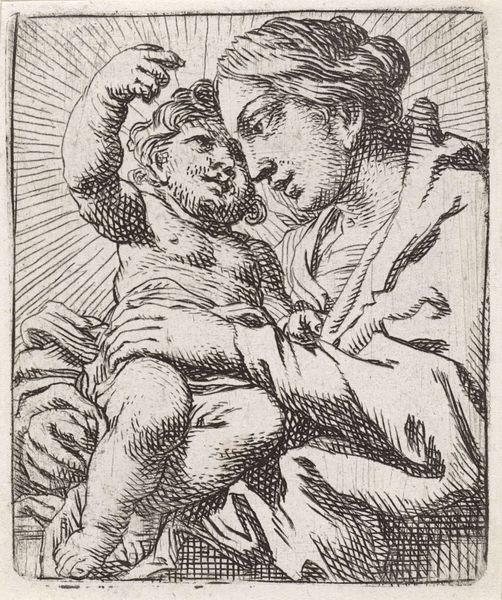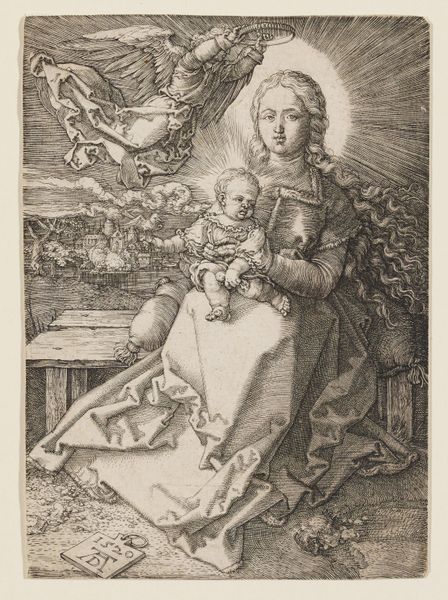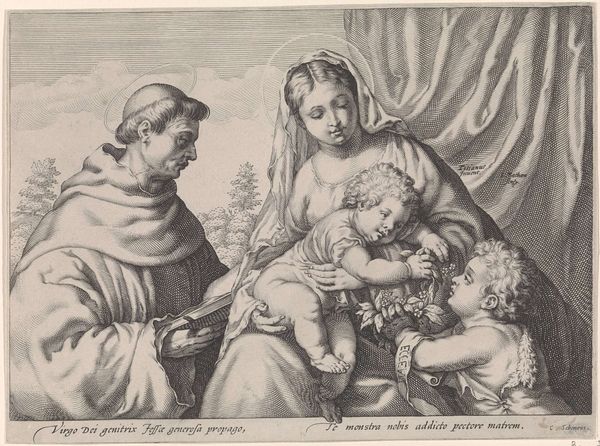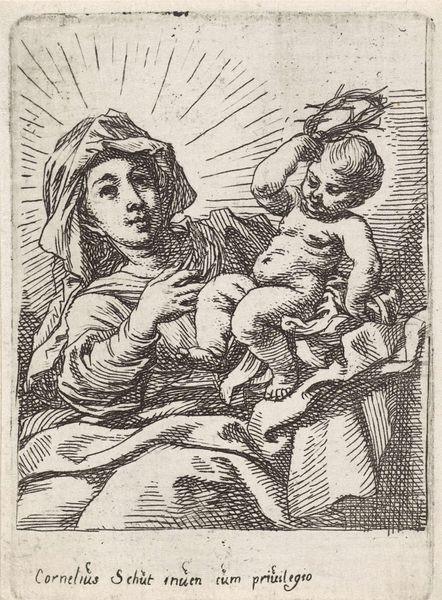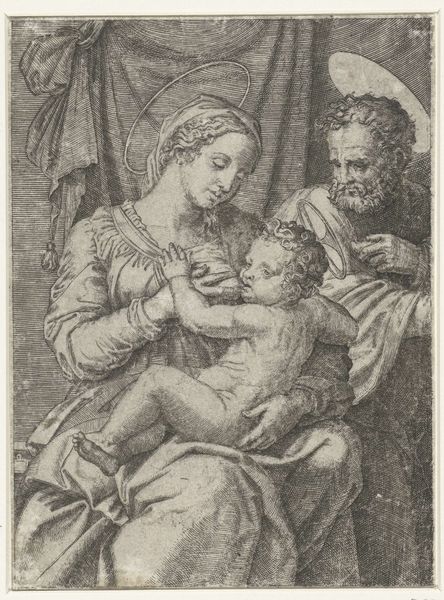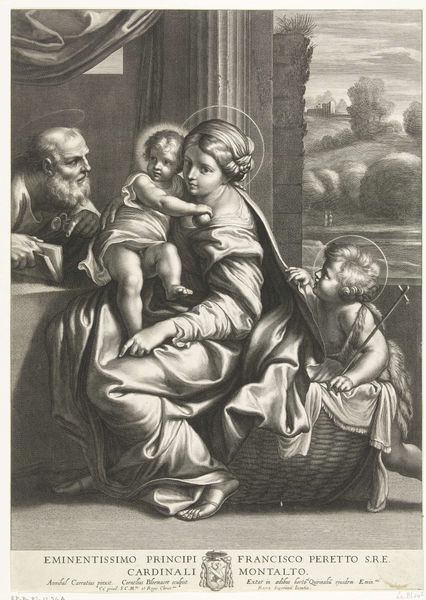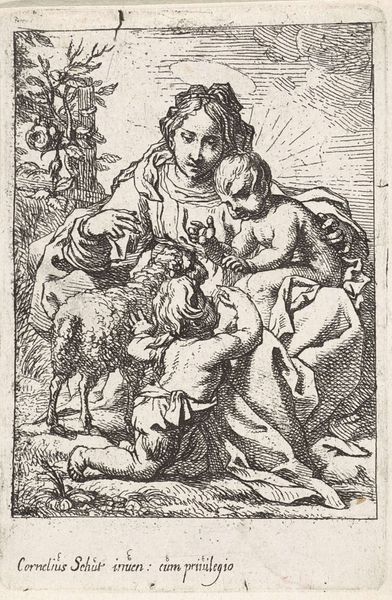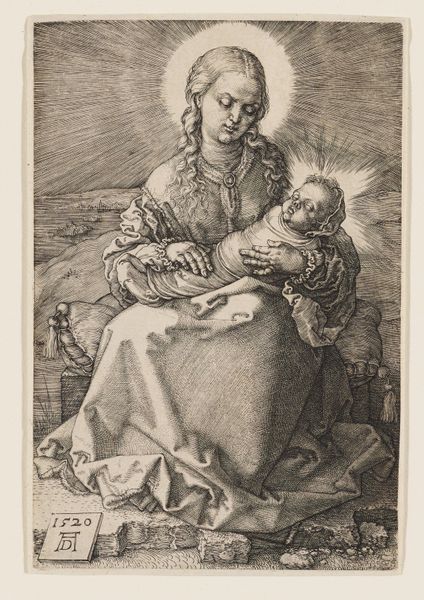
print, engraving
#
portrait
#
baroque
# print
#
history-painting
#
engraving
Dimensions: height 89 mm, width 104 mm
Copyright: Rijks Museum: Open Domain
This depiction of the Holy Family was made by Cornelis Schut, likely in the first half of the 17th century, using a printmaking technique. The image is created by incising lines into a metal plate, inking the surface, and then using a press to transfer the image to paper. The real character of this print lies in its lines. Look closely and you can see how Schut used hatching and cross-hatching to create a sense of depth and shadow, and how the density of these lines varies to suggest different textures and tones. The image is not just a representation of the Holy Family, but also a testament to Schut's skill as a draughtsman and printmaker, and a beautiful example of the kind of widely-distributed devotional image that was commonly produced in the early modern period. It's important to remember that the making of this image was itself a form of labor, requiring skill, time, and effort. By attending to the material qualities of this print, we can begin to understand its full significance, challenging the traditional distinctions between art, craft, and commerce.
Comments
No comments
Be the first to comment and join the conversation on the ultimate creative platform.
